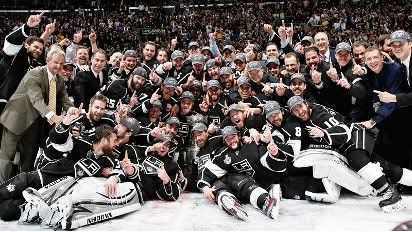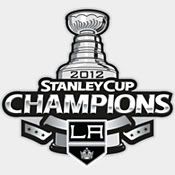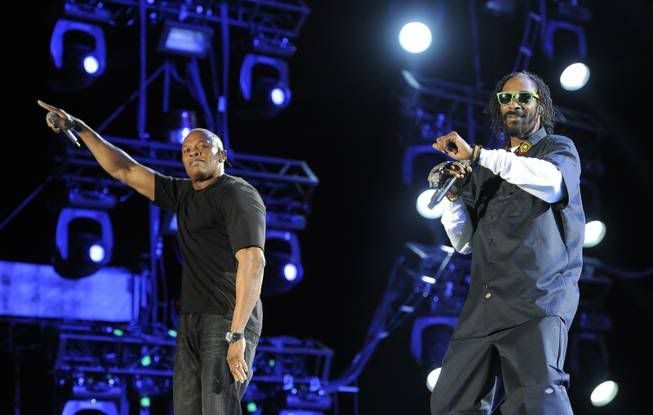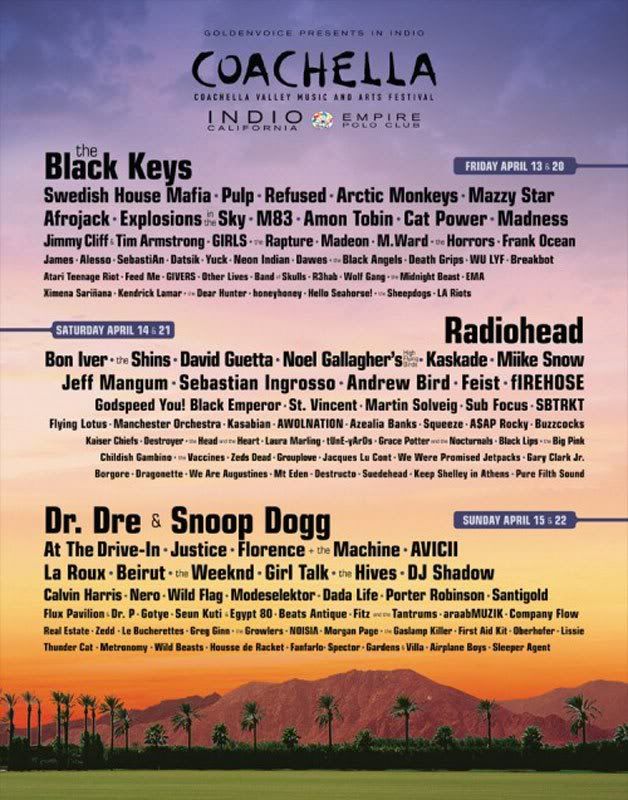By
Andrea Domanick
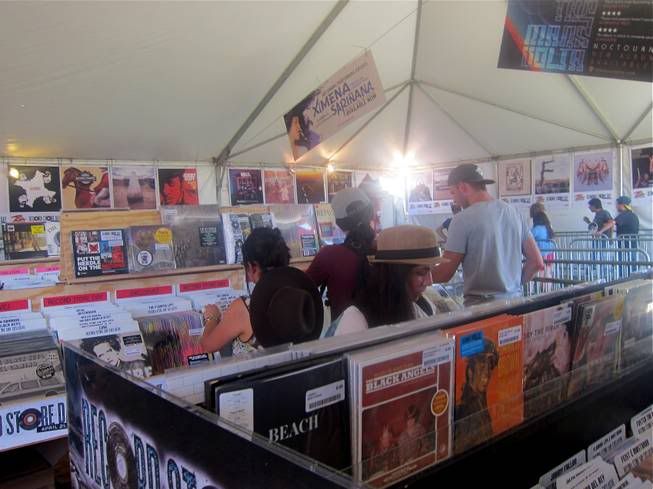
Andrea Domanick
Patrons peruse Zia Records’ Record Store Day offerings at the store’s pop-up shop at the Coachella Valley Music and Arts Festival on Saturday, April 21, 2012.
Thursday, April 26, 2012 | 1:05 p.m.
For many Las Vegans, the trek to this year's Coachella Valley Music and Arts Festival in Indio, Calif., meant a weekend (or two) spent in a music fan’s paradise. For Karl Hartwig, general manager of Zia Record Exchange on West Sahara, the trip meant a crucial business opportunity.
Not that he is in it for the money. In fact, Hartwig and the rest of Zia’s staff are content to simply break even from their festival booths.
“It’s not like we lose money, but let’s just say it’s a pleasant surprise if we turn a profit,” Hartwig says. “We don’t rely on these weekends to bring in money. But we do rely on them to bring in customers.”
Those customers are part of an aging demographic of record store patrons, which makes setting up shop at a youthful festival like Coachella all the more important. Indeed, at last Saturday’s Record Store Day event at the festival, it was Converse-wearing college grads and gray-haired hipsters crowding the racks of Zia’s pop-up shop, while the festival’s contingent of neon-clad teenagers flitted by, stopping only briefly to peruse the merchandise booth next door.
“The demographic of our customers in the 1980s was 16 to 26. Today, it’s 26 to 56. That’s an age group that grew up with vinyl and still values the format, whereas younger people have forgotten about it,” Hartwig explains.
Daniel Kohn, a 30-year-old writer from L.A., was among the crowd picking through Zia’s racks at Coachella on Saturday. He says he prefers vinyl for its “lasting, rewarding quality about feeling good about buying music. You feel like you're contributing and being part of something large and tangible.”
Kohn purchased exclusive releases from the likes of Bruce Springsteen and Leonard Cohen, explaining that he also prefers the sound of the format: “It’s much better quality and, besides, there’s nothing like that crackle sound after the needle hits the vinyl.”
For Zia, harnessing the increasing ubiquity of music festivals means a key promotion and marketing opportunity. The Arizona-based chain, which expanded to two Las Vegas locations in 2005, also sells at this weekend’s Stagecoach Festival in Indio and at numerous festivals in the Las Vegas area, including Warped Tour, Extreme Thing, Reggae in the Desert and 2009's Matador at 21 festival.
"There is no doubt that our presence at festivals has increased business locally," Hartwig says. "It’s a great way to reach people who just walk in the door at festivals. They discover us there and then come into the stores; they say they had no idea we had record stores in Vegas."
Setting up shop at festivals is just one example of new and creative business strategies employed by independent record stores to survive in a time when digital music formats have all but sounded the death knell for traditional music retailers. Record Store Day, an internationally celebrated event observed the third Saturday in April, is another example.
The event, started at the Bay Area’s Rasputin Records in 2007, now has more than 1,700 stores around the world touting exclusive releases, artist signings and other special music-related offerings that can’t be found or downloaded anywhere on the Internet. As a result, vinyl record sales increased 89 percent to 1.9 million copies in 2008, according to Nielsen Soundscan, a growing number that hit 4 million in 2011; 67 percent of last year’s sales were made through Record Store Day-sanctioned independent retailers.
Still, Zia is one of the few that have not only been able to survive, but also thrive. Hartwig says the chain’s role as the exclusive vendor at Coachella in particular for the past four years (replacing now-defunct record store behemoths Tower and Virgin Records) has been essential to that success, thanks in large part to Coachella’s overlap with Records Store Day.
“The best thing about selling at Coachella is that Record Store Day is completely centered during it,” he says, adding that Zia’s pop-up shop is the only location in the country sanctioned to begin selling its Record Store Day offerings one day early, on Friday, April 20.
Coachella’s expansion to two three-day weekends this year proved 2012 to be the busiest year yet for Zia at the festival, a fact that was anticipated by the record industry: For Record Store Day and the festival in general, labels supplied Zia with some of the most exclusive offerings in the country, such as a reissue of highly anticipated Coachella reunion act At the Drive In’s seminal EP “Vaya.”
“East Coast blogs are talking about Zia and the exclusives we offer, saying that they have no idea who we are -- but now they want to know," he says, adding that Zia connects with those markets by promoting its online store and low-cost shipping through the Record Store Day website.
At Coachella, Zia also features more than 60 artist signings and meet-and-greets per weekend, compared to Tower and Virgin’s three or four. While such events are certainly a treat for fans, Hartwig says they’re also great PR for up-and-coming performers like Le Butcherettes and Childish Gambino, the latter of whom boasted the weekend’s longest signing line and the top-selling album of Record Store Day. As a result, Zia is able to foster relationships with fans and artists.
All this is not to say the chain hasn’t had to adjust to life in what is still very much a struggling market; a glance around the pop-up shop reveals the books, T-shirts and other non-music merchandise that pad its inventory of new and used vinyl records and CDs. But look again, and you’ll see fans exchanging sweaty post-show hugs with artists, jotting down record suggestions rattled off by employees and beaming as they pull a long-coveted album out from among the racks; it all attests to the value of hand-to-hand exchange of music that can never be usurped by iTunes.
“I’ve been in this business a long time. It’s really nice to be part of a company that can look toward its future rather than live in fear of it,” Hartwig says.
Follow Andrea Domanick on Twitter at @AndreaDomanick and fan her on Facebook at Facebook.com/AndreaDomanick.

